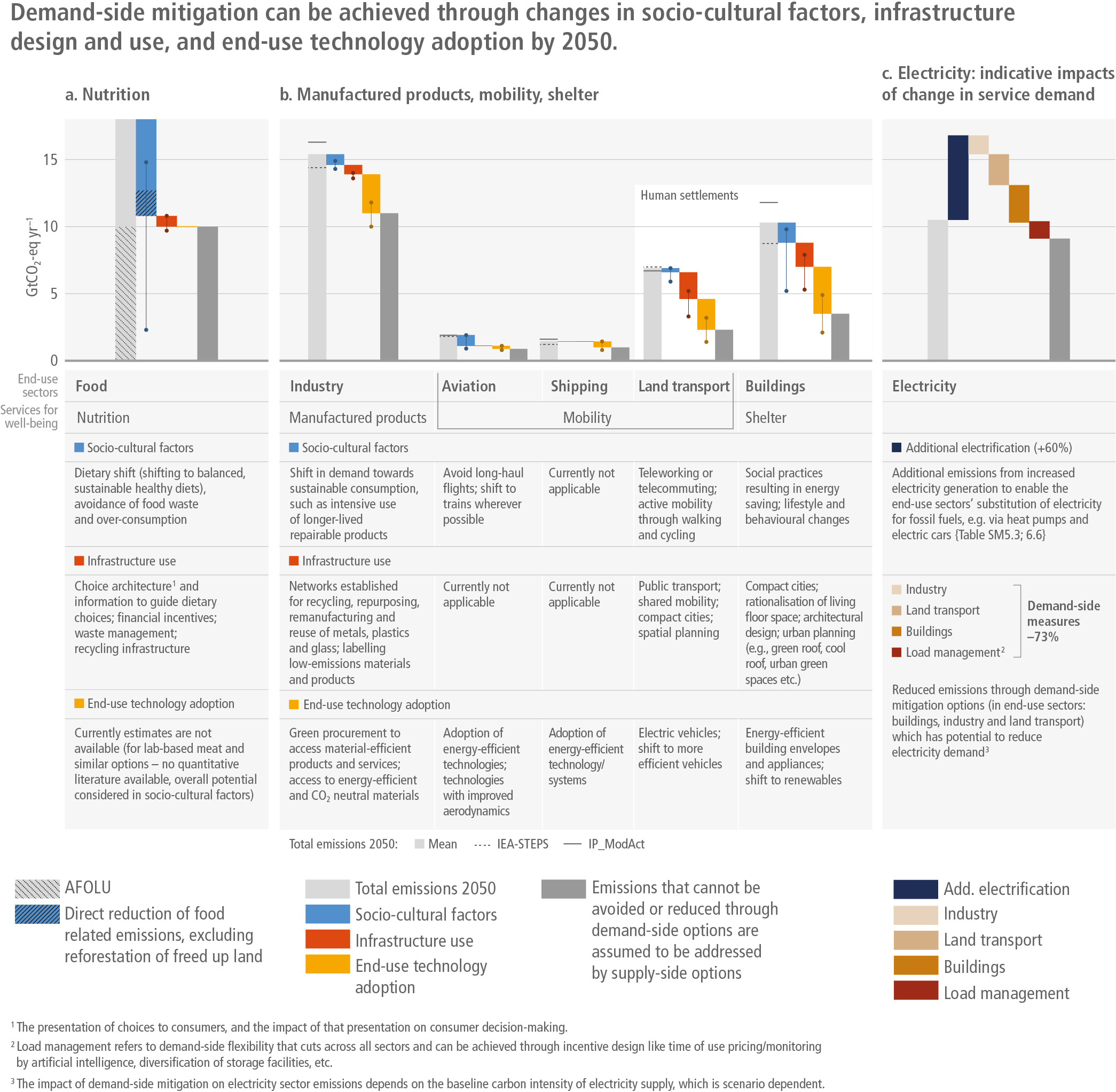Figure 5.7
Figure caption
Figure 5.7 | Demand-side mitigation options and indicative potentials. Demand-side mitigation response options related to demand for services have been categorised into three broad domains: ‘socio-cultural factors’, associated with individual choices, behaviour and lifestyle change, social norms and culture; ‘infrastructure use’, related to the design and use of supporting hard and soft infrastructure that enables changes in individual choices and behaviour; and ‘end-use technology adoption’, which refers to the uptake of technologies by end users. Demand-side mitigation is a central element of the IMP-LD and IMP-SP scenarios (Section 3.3). Food (nutrition) demand-side potentials in 2050 assessment is based on bottom-up studies and estimated following the 2050 baseline for the food sector presented in peer-reviewed literature (more information in Chapter 5 Supplementary Material II and Chapter 7, Section 7.4.5). Industry (manufactured products), land transport, aviation and shipping (mobility), and buildings (shelter) assessment of potentials for total emissions in 2050 are estimated based on approximately 500 bottom-up studies representing all global regions (detailed list is in Table 5.SM.2). Baseline is provided by the sectoral mean GHG emissions in 2050 of the two scenarios consistent with policies announced by national governments until 2020. The heights of the coloured columns represent the potentials represented by the median value. These are based on a range of values available in the case studies from literature shown in Chapter 5 Supplementary Material II. The range is shown by the dots connected by dotted lines representing the highest and the lowest potentials reported in the literature. The demand-side potential of socio-cultural factors in food has two parts.The median value of direct emissions (mostly non-CO2) reduction through socio-cultural factors is 1.9 GtCO2-eq without considering land-use change through reforestation of freed up land. If changes in land-use patterns enabled by this change in food demand are considered, the indicative potential could reach 7 GtCO2-eq. The ‘electricity’ panel presents how sectoral demand-side mitigation options (industry, transport and buildings) can change demand on the electricity distribution system. Electricity accounts for an increasing proportion of final energy demand in 2050 (‘additional electrification’ bar) in line with multiple bottom-up studies (detailed list is in Table 5.SM.3) and Chapter 6 (Section 6.6). These studies are used to compute the impact of end-use electrification which increases overall electricity demand. Some of the projected increase in electricity demand can be avoided through demand-side mitigation options in the domains of socio-cultural factors and infrastructure use strategies in end-use electricity use in buildings, industry and land transport found in literature based on bottom-up assessments (Section 5.3 and Chapter 5 Supplementary Material II).
